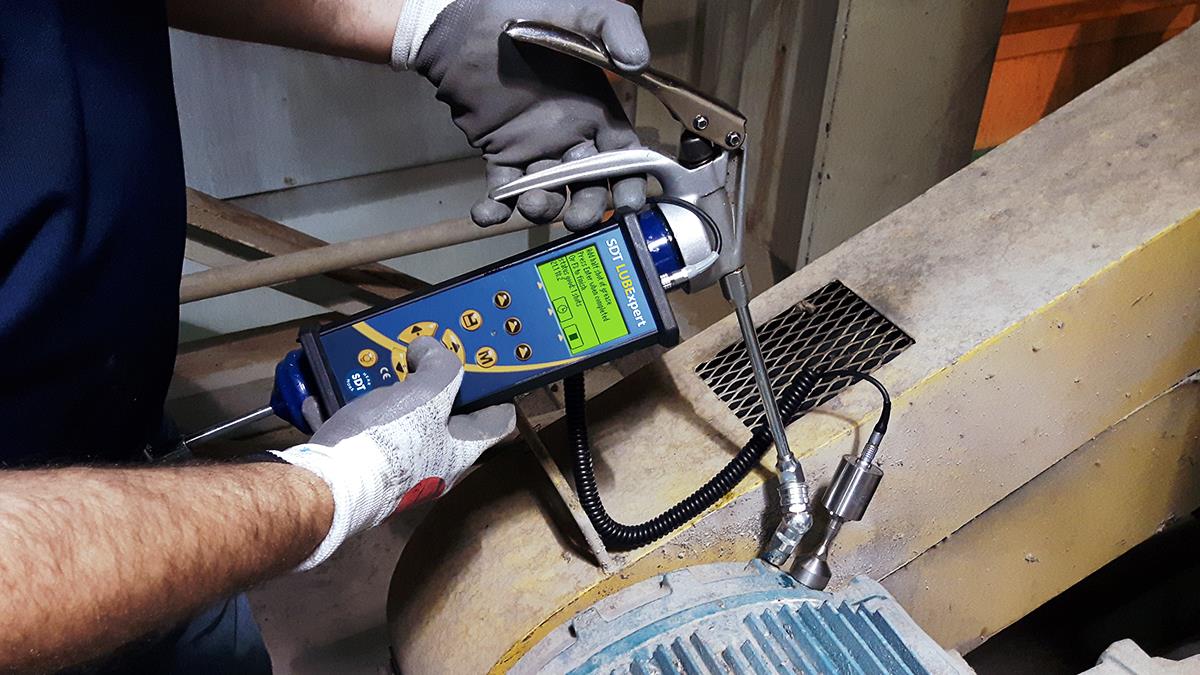
Keeping a handle on lubrication is easy, right? All one needs to do is make sure the proper lubricant is used in the right amount and at the right time. However, real-world lubrication management is far more complex. Bearing failures often lead to unplanned downtime, impacting production and affecting all related components around the bearing.
Downtime is costly. While the cost varies by incident and plant, it can add up. Since the most common cause of bearing failure is lubrication-related (up to 80%), it's clear that lubrication is a serious business. For the longest time, that serious business has been conducted in a way that, on the surface, makes perfect sense but actually borders on haphazardness.
The Downside of Time-Based Lubrication
Unfortunately, many technicians have relied on preventive, time-based lubrication alone; that is, every few months, the grease gun comes out, and the bearings are lubricated. After all, under-lubrication can be lethal, causing equipment failure, costly repairs and replacements, significant unplanned downtime, and lost profits.
However, relying solely on time-based lubrication or a combination of planned maintenance and temperature readings to serve as a proxy for lubrication status risks over-lubrication, which is just as bad, if not worse.
Over-lubrication can cause premature bearing failure and increased operating temperatures. Relying on time-based, periodic lubrication assumes bearings must be greased at defined periods. Often, this evolves into a well-intentioned guessing game at best. Adding more lubrication to an already adequately greased bearing is a real risk.
By integrating ultrasound technology with lubrication best practices such as purging old grease and applying the correct amount of fresh lubricant, technicians can combine standard, time-based maintenance with condition-based, predictive maintenance, gaining a clearer picture of what's going on and better reliability.
Ultrasound Technology
Ultrasonic equipment captures both airborne and structure-borne ultrasound signals that are imperceptible to the human ear. It electronically transposes them into audible signals that a technician can hear through headphones and view as decibel (dB) levels on a display panel. Some instruments can also view the received sound on a spectral analysis screen. With this information, a trained technician can interpret the bearing condition to determine what, if any, corrective action is needed.
Ultrasonic technology helps the lubrication technician eliminate much of the guesswork regarding lubrication needs. Ultrasound is a localized signal, meaning that when a sensing probe is applied to a bearing, crosstalk will not affect it. This allows the technician to hear and monitor the condition of each bearing. Ultrasound looks at each bearing individually, like medical ultrasound can detect which artery is clogged or which vein is leaking.
Consider this as an example of ultrasound's efficacy: A maintenance manager at a large firm reports that, since adopting ultrasound technology and practicing ultrasound-assisted condition-based monitoring, rather than running to put out the fire, his plant has gone from nearly 30 rotating equipment failures per year to zero in three years. But how does ultrasound work with lubrication?
How Ultrasound Works with Lubrication
The first step is establishing a baseline dB level and a sound sample. Ideally, this is done when moving through a route for the first time by comparing dB levels and sound qualities of similar bearings. Anomalies will be easily identified.
Once established, each bearing can be trended for amplitude or sound quality changes over time. Generally speaking, when a bearing's amplitude exceeds 8 dB, and there's no difference in the sound quality established at baseline, the bearing needs to be lubricated. To prevent potentially disastrous over-lubrication, the technician will apply lubrication, a little at a time, until the dB level drops.
Many departments implement a two-stage approach to their condition-based lubrication programs. The reliability inspector uses a relatively sophisticated ultrasound instrument to monitor and trend bearings, producing a report of bearings needing lubrication. The lube technician then uses a specialized ultrasound instrument that alerts the technician when to stop adding grease. These instruments can be affixed to a regular grease gun or worn in a holster.
To improve efficiency, it's good practice for the technician to note when the equipment was last greased and how much grease was used to calculate the amount of lubrication used per week. Using ultrasound every time they lubricate, the technician produces historical data that can be used as a guide from previous calculations, helping the department determine whether the lubrication schedule needs modifying and whether the manufacturer's suggested lubrication amount is accurate.
While most of this discussion has focused on the dangers of under- and over-lubrication, ultrasound is just as reliable in picking up other potential bearing failure conditions. The technician, using ultrasound, can hear telltale grinding sounds and other anomalies, which are often accompanied by an increase in amplitude. Concerning lubrication, the advantage of ultrasound is that it can isolate bearings and determine their individual needs, thus reducing the possibility that some bearings are too dry and preventing others from over-lubrication.
Ultrasound-Assisted Lubrication Scenarios
There tend to be three overarching positive scenarios regarding lubrication practices in facilities: good, better, and best.
A good scenario is to utilize the manufacturer's recommendations on the frequency, type, and amount of lubricant applied to a specific piece of equipment.
A better scenario is to use the timed interval still, but instead of lubricating with a grease gun, add an ultrasound instrument while greasing. This will let the lubrication technician know when they have added enough grease or if too much grease has been applied. Another benefit is the technician can listen to the bearing during lubrication, allowing the technician to hear if other bearing defects are present that lubrication cannot solve. This allows the lubrication technician to also become a fault finder.
If a machine bearing does not sound normal or has an increased dB level noted on the instrument used for lubrication, the bearing can be documented, and a complementary test, such as vibration or ultrasound data, can be collected to determine the issue or defect.
Finally, the best scenario is to use an ultrasound instrument with data storage and management software to create routes. Data (dB levels and sound files) are recorded periodically; how often readings are taken is based on asset criticality.
Once a baseline is established, alarm levels are set. Low-level alarms are set for bearings lacking lubrication, and high-level alarms are set for bearings reaching the point of initial failure. With low-level alarms, a technician can go to the identified problem point and apply lubrication until the dB decreases to baseline or normal levels. With high-level alarms, lubrication will not solve the problem, and a more detailed test is needed to determine the specific defect taking place.
Conclusion
It can be daunting to invest in new technology. Will the investment pay off? Will technicians have an easy time using the technology? These hesitations often result in continued reliance on outdated maintenance and lubrication strategies, leading to suboptimal equipment performance. This results in poor reliability, wasted man-hours, excessive downtime, and lost productivity and profit.
However, taking the time to investigate different technology solutions creates significant benefits. While technology cannot cure all, it provides a powerful diagnostic tool for technicians’ toolkits.
Regarding something as important as lubrication reliability, the question should become, "Can we afford not to use ultrasound technology?”
This paper was provided as supporting materials for Adrian Messer's speaking session at the Reliable Plant Conference. To learn more about attending Reliable Plant Conference, click here.


.jpeg)


